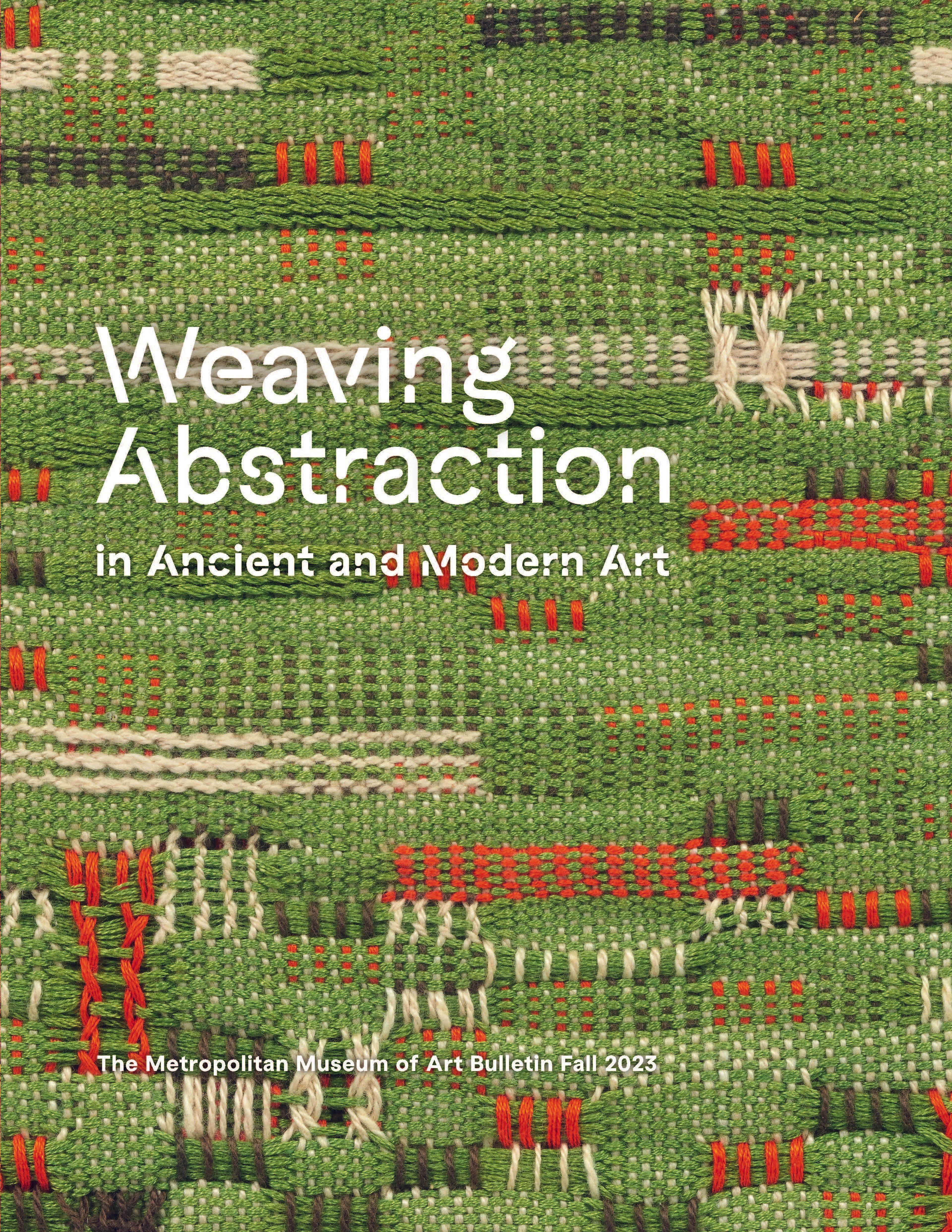Headband
This vibrantly colored headband with ornamental tassels, made by Nasca weavers on the south coast of Peru, illustrates both the impressive technical skill needed to produce a fabric of this length and complexity and the remarkable preservation of organic material in the Nasca desert, one of the driest places on earth. The brilliant blue color was obtained using indigo and the red from either cochineal or Galium sp (Devia Castillo, 2018). The geometric stepped design on the body of the headband is a common style reproduced on many Nasca garments from this period. The tassels at the two ends are made from the warps woven into six bundles using the same colors as on the main body of the fabric. The exclusive use of camelid fibers, obtained from llamas and alpacas native to the higher altitudes in the Andes, suggests an influence of the highland Wari culture, an empire that later dominated the coast.
References and Further Reading
Bjerregaard, Lena. Precolumbian Textiles in the Ethnological Museum in Berlin. Lincoln, NB: Zen Books, 2017, pp.73.
Devia Castillo, Beatriz, “Fibers and Dye Used in Textiles from the Andes.” In Inca: Textiles and Ornaments of the Andes, edited by Serge Lemaitre, pp. 21-32. Brussels, Belgium: Ludion, 2018.
Desrosiers, Sophie. “Raw Materials and Textile Skills in Context in the Pre-Hispanic Central Andes.” In Inca: Textiles and Ornaments of the Andes, edited by Serge Lemaitre, pp. 51-70. Brussels, Belgium: Ludion, 2018.
Lavalle, José Antonio de. Culturas precolombinas: Nazca. Arte y tesoros del Perú. Lima, Peru: Banco de Crédito del Perú en la Cultura, 1986, pp. 79, 78.
Peters, Ann Hudson. “Pre-Columbian South Coast Textiles of Peru: Paracas and Nasca Attire, Relationships and Significance.” In Inca: Textiles and Ornaments of the Andes, edited by Serge Lemaitre, pp. 136, fig. 140. Brussels, Belgium: Ludion, 2018.
References and Further Reading
Bjerregaard, Lena. Precolumbian Textiles in the Ethnological Museum in Berlin. Lincoln, NB: Zen Books, 2017, pp.73.
Devia Castillo, Beatriz, “Fibers and Dye Used in Textiles from the Andes.” In Inca: Textiles and Ornaments of the Andes, edited by Serge Lemaitre, pp. 21-32. Brussels, Belgium: Ludion, 2018.
Desrosiers, Sophie. “Raw Materials and Textile Skills in Context in the Pre-Hispanic Central Andes.” In Inca: Textiles and Ornaments of the Andes, edited by Serge Lemaitre, pp. 51-70. Brussels, Belgium: Ludion, 2018.
Lavalle, José Antonio de. Culturas precolombinas: Nazca. Arte y tesoros del Perú. Lima, Peru: Banco de Crédito del Perú en la Cultura, 1986, pp. 79, 78.
Peters, Ann Hudson. “Pre-Columbian South Coast Textiles of Peru: Paracas and Nasca Attire, Relationships and Significance.” In Inca: Textiles and Ornaments of the Andes, edited by Serge Lemaitre, pp. 136, fig. 140. Brussels, Belgium: Ludion, 2018.
Artwork Details
- Title:Headband
- Artist:Nasca artist
- Date:6th–7th century
- Geography:Peru, Rio Grande de Nasca
- Culture:Nasca
- Medium:Camelid fiber
- Dimensions:H. 3 x D. 56 x L. 136.25 in. (7.6 x 142.2 x 346.1 cm)
- Classification:Textiles-Woven
- Credit Line:The Michael C. Rockefeller Memorial Collection, Bequest of Nelson A. Rockefeller, 1979
- Object Number:1979.206.746
- Curatorial Department: The Michael C. Rockefeller Wing
More Artwork
Research Resources
The Met provides unparalleled resources for research and welcomes an international community of students and scholars. The Met's Open Access API is where creators and researchers can connect to the The Met collection. Open Access data and public domain images are available for unrestricted commercial and noncommercial use without permission or fee.
To request images under copyright and other restrictions, please use this Image Request form.
Feedback
We continue to research and examine historical and cultural context for objects in The Met collection. If you have comments or questions about this object record, please contact us using the form below. The Museum looks forward to receiving your comments.
